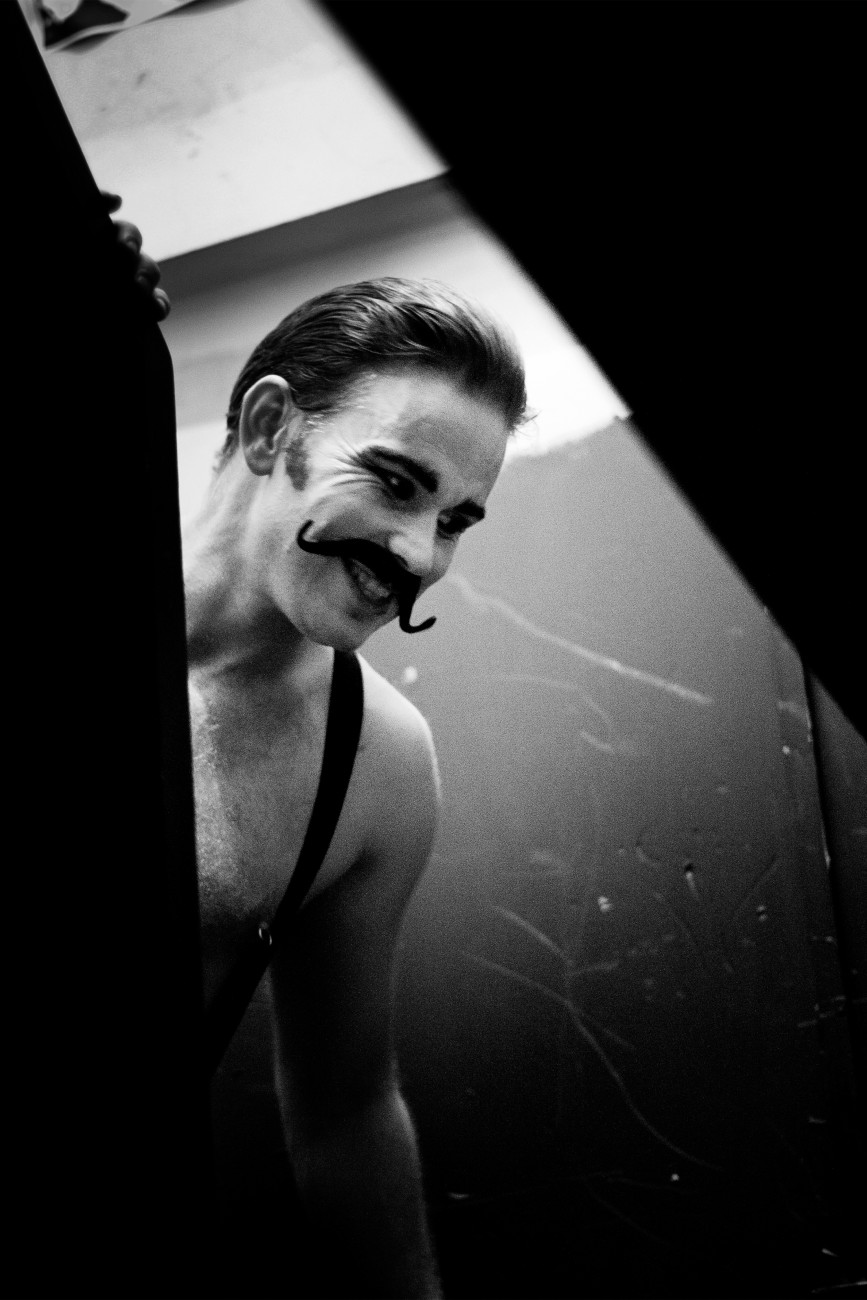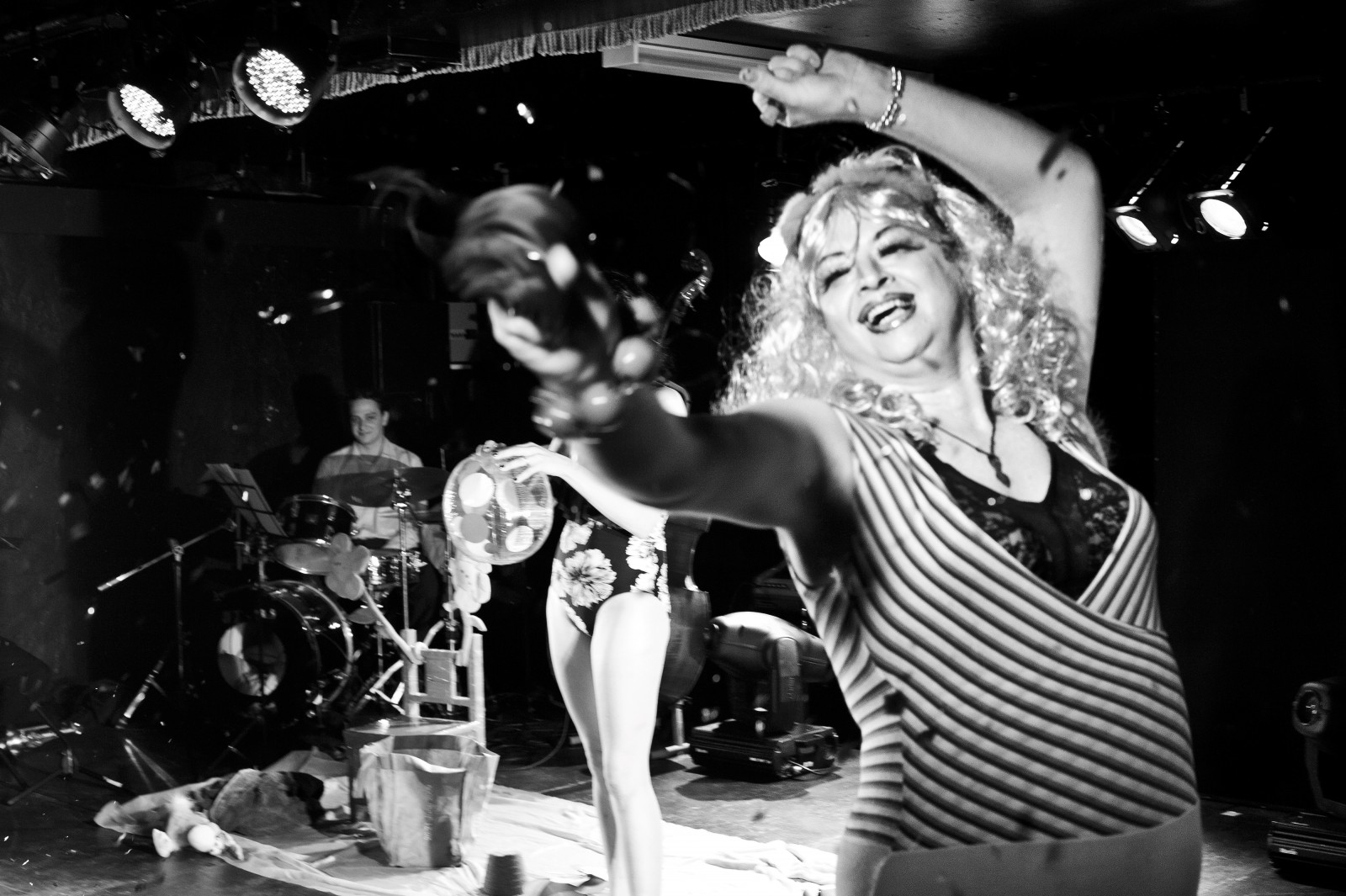
The Voice of the City
Derived from voix de ville, literally voice of the city, vaudeville performances became popular in the United States at the turn of the 20th century, competing for patronage as an upper-class alternative to the more sultry form of burlesque. A troupe in Auckland is the latest in a worldwide revival of the variety show, translating the voice of their city for a new generation of theatre-goers.

Ten snowy white cockatoos surround Madame Marzella, Queen of the Feathered Tribe. The raven-haired woman stands in the centre of a wooden stage, a feather boa framing her ornate Victorian dress, and the packed theatre watches with delight as her birds wheel out a small piece of artillery. The cannon is fired, killing an enemy bird. A military funeral follows.
Madame Marzella and her birds were just one of a multitude of vaudeville acts gracing New Zealand theatres in the early 20th century. Derived from the expression voix de ville, literally “voice of the city”, the vaudeville movement is a descendant of variety shows and enjoyed popularity in New Zealand from the 1890s to the 1930s.
A nightly vaudeville billing grouped a number of unrelated acts together. Madame Marzella, for example, could have followed The Gallardi Sisters—Ivy and Beattie—who opened with “The Girls with the Naughty Wink”, and repeated the dance on request. Shewin, the Musical Tramp, delivered a combination of mirth, music and madness before The Flying Moultons demonstrated acrobatic feats that (apparently) defied gravity and at times strained the nerves of those present.

John Fuller, a professional singer originally from London, imported the vaudeville format in 1898 with the establishment of the John Fuller and Sons Melbourne Waxworks and Vaudeville Company in Auckland. Tea merchant Percy Dix also recognised the business opportunity, and set up Dix’s Gaiety Company in 1899, also in Auckland.
Rapid expansion followed, as it had in the United States, where vaudeville flourished. The two competitors dominated the New Zealand scene, renting theatres in Auckland, Wellington, Christchurch and Dunedin to stage jugglers, singers, dancers and other acts, providing a rolling circuit of shows.
Crowds thronged to the places of amusement, and central-city infrastructure scrambled to keep up. New town halls were built in Wellington in 1904 and in Auckland in 1911. His Majesty’s Theatre (later St James) opened in Wellington in 1912 as Australasia’s largest vaudeville theatre.

Both Fuller’s and Dix’s companies offered ‘clean’, high-quality acts, suitable for the entire family. (Percy Dix was so fastidious about delivering an experience devoid of vulgarity that he required his performers to sign a code of conduct outlining acceptable on- and off-stage behaviour.)
The competing businessmen continued to evolve the performances according to the changing tastes of the audience, and new technology. Vaudeville performances were some of the first to include motion-picture screenings as part of their bill.
Overseas, the vaudeville movement was thriving in America, England, France and Canada. In many of these foreign theatres, vaudeville pushed the boundary of what was socially acceptable. (Indeed, the crowds and theatres built by the vaudeville movement provided the more raunchy art of burlesque with punters and stages.)

In America, the genre shaped show business. The vaudeville stage became the first to disregard the race, religion and class of the performer, allowing African-American performers to take the stage. It gave birth to the careers of Charlie Chaplin, Harry Houdini and Adele and Fred Astair, to name a few. Often performers would hone their skills on the vaudeville stage before moving on to Hollywood or Broadway.
But despite adopting film in performances early, vaudeville ultimately lost out to the new technology. As standardised film distribution and talking pictures of the 1930s boomed, and radio stations broadcast free entertainment, followed by television, vaudeville slipped from the stages.
Today, there is a widespread revival of the vaudeville form, and as in the 20th century, it thrives in Auckland, as it does internationally. Auckland’s Basement Theatre plays a seasonal ‘vaudeville cabaret’, a frivolous world of tassels and swaying hips, a blend of comedy, dance, circus, live jazz and drag. In the spirit of the form, it reflects the voice of the city—acts that are perhaps more provocative and urbane than those that graced the stages of yesteryear. And just as they were an echo of their era, in the modern performance can be heard the voice of the cosmopolitan city that Auckland has become.

















